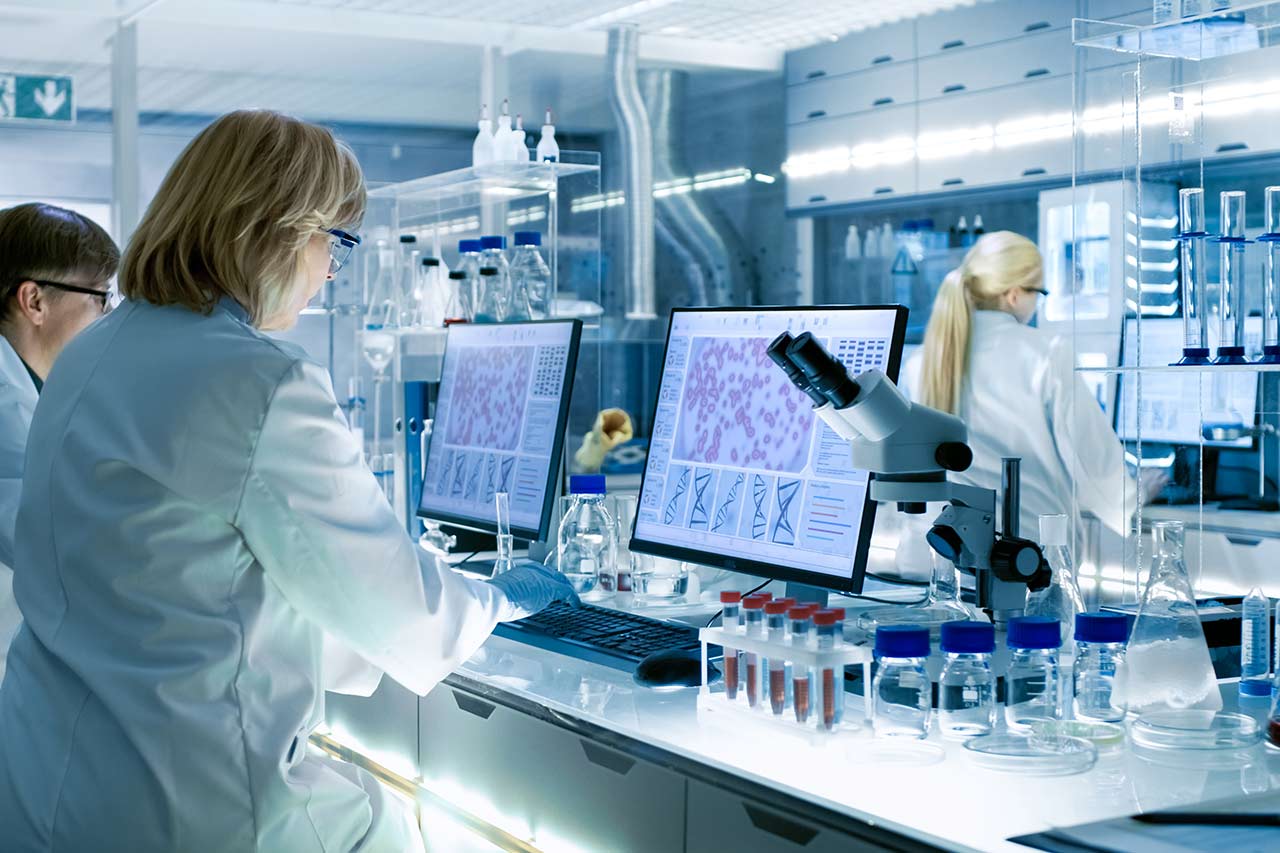The laboratory of the future

In today’s digital revolution – Industry 4.0, Big Data, Human Machine Interface (HMI), and intelligent connectivity – working environments are changing completely. While certain industries have already profoundly changed their processes, certain sectors such as Research are still in its infancy. Great technological upheavals are emerging and could strongly impact the field of Research. Alcimed, a consulting firm specializing in innovation, offers an overview of technologies that could transform the daily lives of researchers.
The first steps in the digitalisation of the laboratory are still very subtle and often come down to the implementation of a digital laboratory notebook. If the laboratory of Tony Stark in the Iron Man saga remains confined to science fiction, different fundamental elements are today at the disposal of the research centres.
Voice assistants:
Today, the voice assistants Siri, Alexa, and Google Home are well known by the general public and widely used in our personal lives for playing music, knowing the weather forecasts or setting a timer; yet the potential of these smart devices for R&D is immense. While physically handling something, a researcher could potentially interact in real time with this voice assistant to access experimental procedures, search the results of a previous experiment or record voice memos about the currently ongoing experiment. “The development of such features requires the implementation of custom databases and the learning of new semantics”, said Vincent Pessey, Project Manager at Alcimed. Some companies decided to develop in this niche market, like the American start-up Helix AI which offers a voice assistant specifically for laboratories, based on Amazon’s Alexa system.
Augmented Reality (AR):
AR allows to present data in an interactive way, in real time in a real-world environment. Apprentice Field Suite (AFS) is a pioneer in this disruptive technology for laboratory applications, particularly in the biopharmaceutical industry. AFS’ technology combines smart glasses with software to remotely track experiments, superimpose information on equipment, project experimental protocols, and automatically record experiments, allowing the researcher to have both hands free hand for other tasks.
Nowadays, this projection is possible via portable devices such as glasses or tablets and is therefore quite restrictive because it requires the researcher to wear an uncomfortable device. Nonetheless, an interesting alternative is emerging: get rid of glasses or tablets by the development of an independent system, more specifically a type of projector which allows the visualization of information on any surface. This technology is starting to be deployed, in particular to facilitate assembly operations, like the Light Guide Systems (LGS) AR tool developed by the American company OPS Solutions, LCC.
Cobots:
Cobots, robotic arms that enable to interact with operators, could play a major role in the laboratory of the future, especially to perform repetitive or delicate tasks requiring very high reproducibility. Indeed, these collaborative robots are renowned for their accuracy, reliability and high execution speed. The use of these robotic arms in laboratory environments is still limited, nevertheless, two cobots of Universal Robots have already been used for the handling and sorting of blood samples in a medical analysis laboratory at the Gentofte hospital in Denmark. The Czech company REPLAC-BM, operating on the market of paints and coatings, has also acquired a cobot from Universal Robots to perform colour control tests with a spectrophotometer. In these examples, given the constraints on space in laboratories, the cobot collaborates with the technician to free him from repetitive tasks and lets him focus on the operations where human accuracy remains indispensable.
Connected objects:
Beyond these new approaches, laboratory digitization will inevitably involve the deployment of connected equipment or instruments. Some examples of potential applications of connected objects for the laboratory of the future are: tracking samples through RFID tags, real-time environmental monitoring of a laboratory (temperature, humidity, etc.), managing equipment in real time via a single platform, piloting remote experiments, or automatic recording of experimental data by pipette-connected instruments. Many companies are flourishing in this segment, among others, Gao RFID INC, Monnit, Tetrascience, Cubuslab, Elemental Machines, Gilson, and Thermofisher.
“The transparency and reproducibility of research, the reliability and accuracy of data, the rapid identification of factors that can affect the smooth running of an experiment, and the sharing of data are challenges that researchers face and can only successfully be overcome by digitally transforming the laboratory.”, concludes Vincent Pessey, Project Manager at Alcimed.
Do you have an exploration project?
Our explorers are ready to discuss it with you